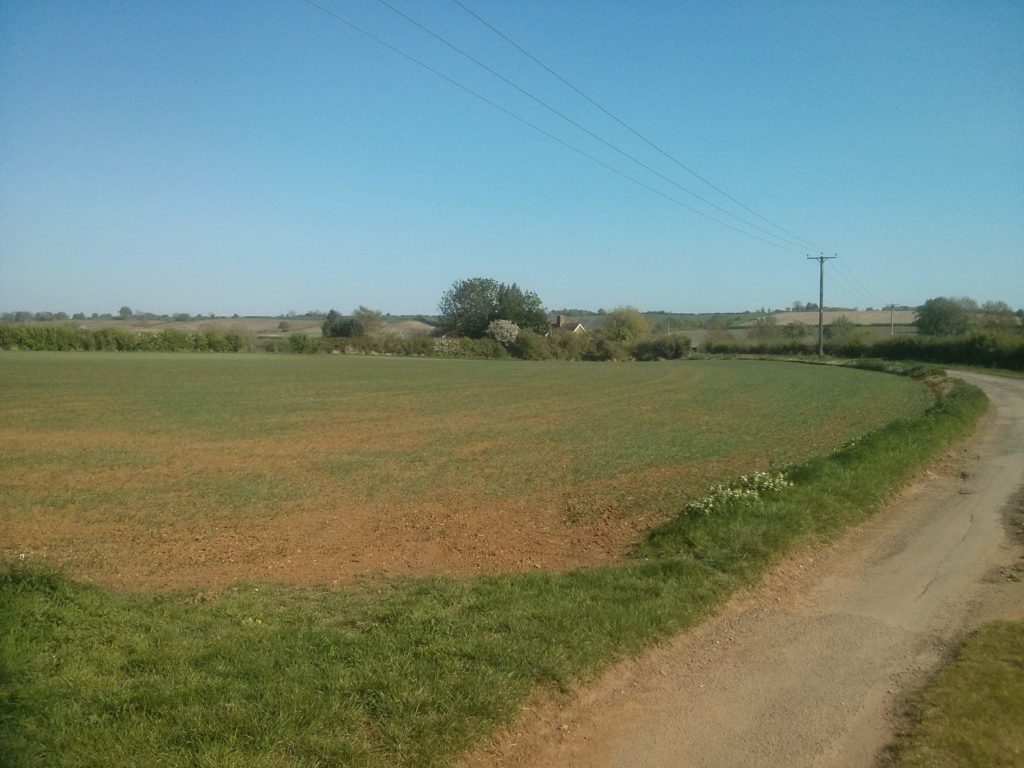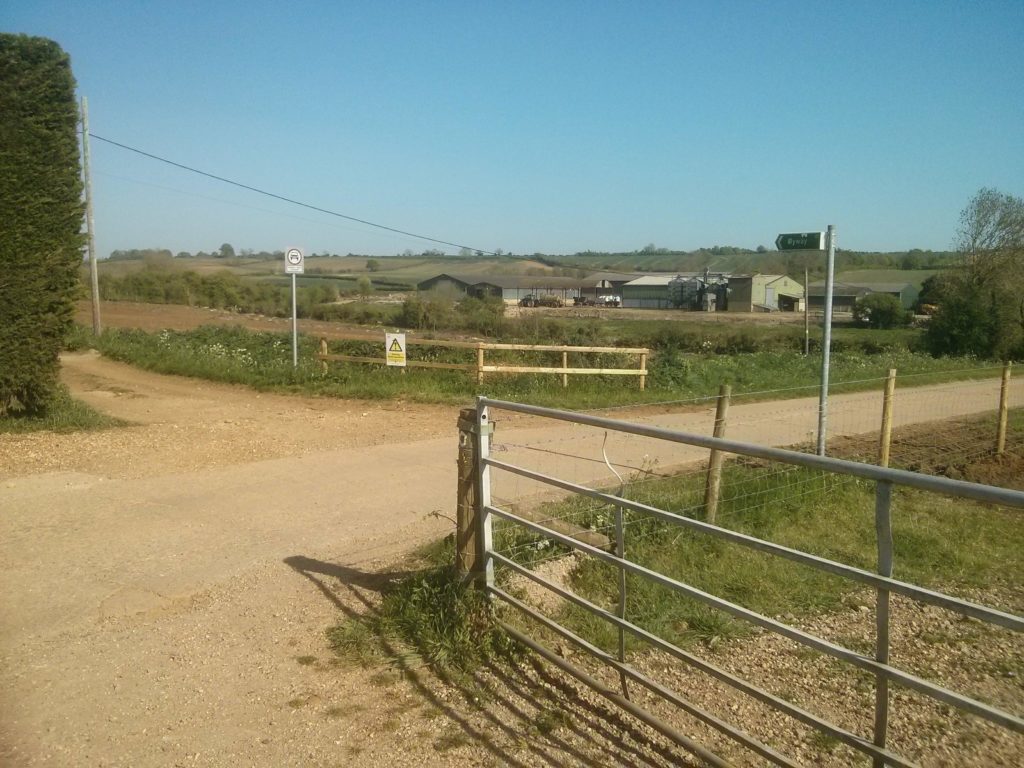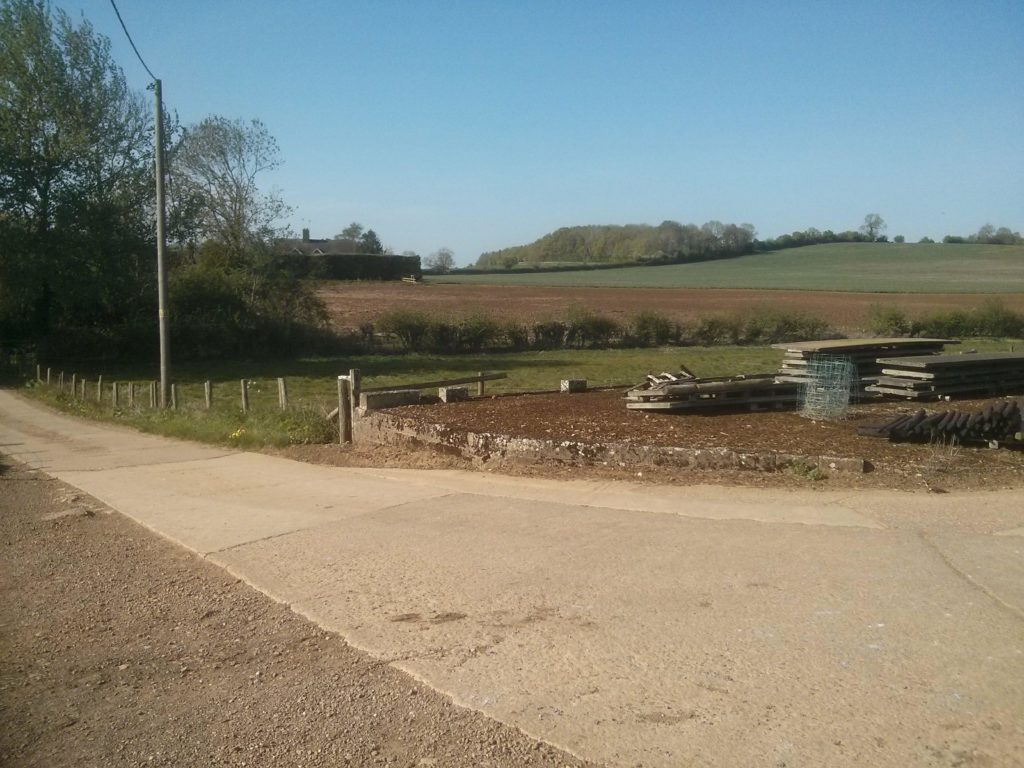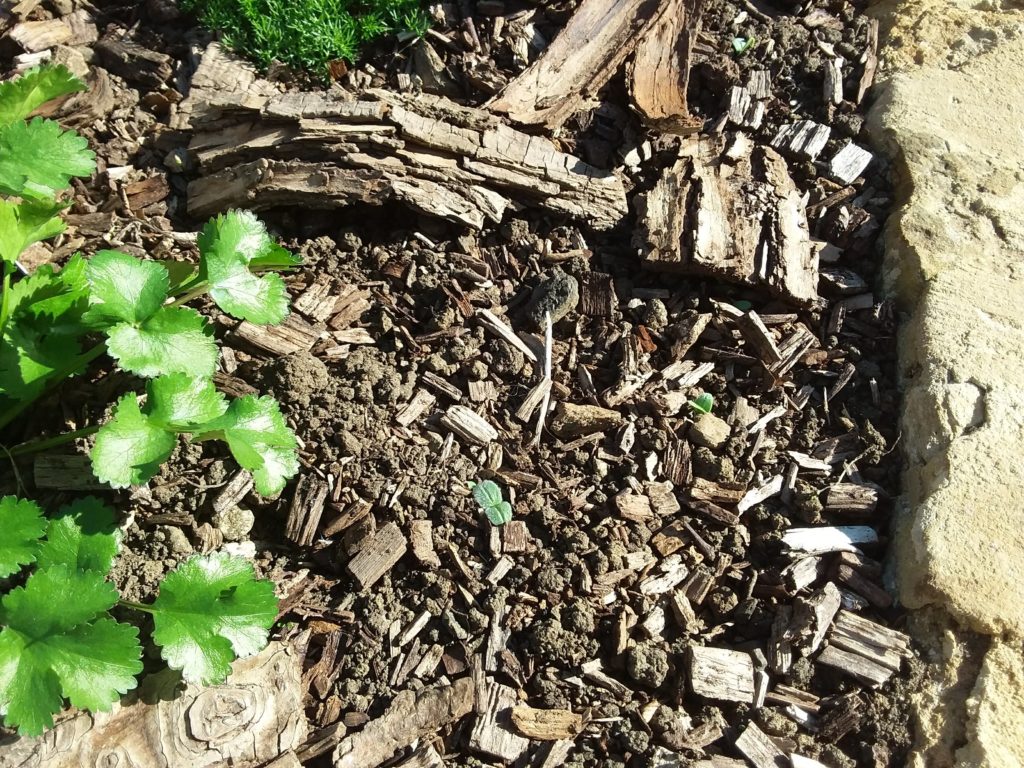Text of a leaflet collected some time approximately in the 2005 – 2015 time period
A collection of the herbs that were popular prior to 1066
Lucy Cavendish College
Cambridge
CB3 0BU
Telephone: +44(0)1223 332190
Fax: +44(0)1223 332178
Email: lcc-admin@lists.cam.ac.uk
The garden is open at any time to College visitors and at other times by appointment
Senior Gardener: Helen Seal
An Anglo-Saxon Herb Garden
“What is a herb?” asked Alcuin (AD 735-804), the English monk born and educated in York, who was one of Charlemagne’s advisers.
“The friend of the physician and the praise of cooks”, replied the Emperor, who was so interested in herbs that he decreed that some seventy-three different types, as well as sixteen varieties of fruit and nut trees, be planted in the gardens on imperial estates in every city of the Carolingian empire, as set out in the De Capitulare de Villis of c. AD 800. His definition has stood the test of time and herbs are accepted today as plants which are used for culinary purposes, for their aromas and perfumes, for their medicinal properties, as pesticides, for dyeing, or merely for their beauty.
The distinctions which we commonly make between herbs and vegetables, herbs and weeds, and herbs and flowers were not really established until the development of elaborate ornamental gardens in the 16th and 17th centuries, and the separation of the ‘kitchen garden’ in the 18th century.
The Anglo-Saxon Herb Garden was created at Lucy Cavendish College in 1987 in response to the need to give the College gardens a particular focus of interest. It arose from the researches of Dr. Jane Renfrew and Dr. Debby Banham on various aspects of the knowledge and uses of plants in Anglo-Saxon England. From their research into the actual remains of plants found in archaeological excavations, and references to plants in Anglo-Saxon literature it was possible to compile a list of plants known and used in England at this time.
The physical remains of plants – mainly seeds – have been found on a number of recently excavated sites; for example in Winchester, Southampton, Charlton, Gloucester, Norwich and York.
The main Anglo-Saxon texts referred to are Aelfric’s Colloquy (Nominum herbarum) of AD 995, and Bald’s Leechbook (a medical textbook) of AD 900 – 950. Incidental references to plants occur widely in contemporary literature, including the writings of the Venerable Bede 673-735, Alcuin, and St. Ethelwold for example. There are also direct references to gardens associated with monasteries (but without detailed descriptions or plans) in 9th-century Winchester, 10th-century St. Albans and 10th-century Ely.
It is also clear that monastic libraries sometimes contained copies of Diosorides’ De Materia Medica and of The Herbarium of Apuleius, which is an Anglo-Saxon translation of the original Latin text, incorporating lengthy extracts from Dioscorides. Successive copies of these works were illustrated with drawings from life of the plants from the gardens.
The aim of the garden is to give some idea of the range of plants used in Anglo-Saxon England: as culinary herbs, for fruits or flavourings, for their medicinal properties, for their perfumes, for use as strewing herbs, for dyeing, as insecticides, and so on. Many of the plants fulfilled several purposes. Straweberries, for example, were valued for their fruit at midsummer, their leaves were boiled to be used as a poultice, they could be used for cooling drinks, as a gargle for sore throats, and water distilled with strawberry leaves was used as a skin lotion.
None of the plants in the garden is particularly exotic; most of them are very familiar: but we are not so aware today – as our Anglo-Saxon ancestors were – of all their possible uses.
To elaborate on these uses a folder is kept in the room overlooking the garden so that those wishing to know more can easily find the information.
Leaflet Design by Holly Leaf Design 024 7654 4255
Left side
Apple mint
Spearmint
Top left bed
Elecampane
Rosemary
Fennel
Monkshood
Angelica
Madder
Iris
Woad
Sage
Agrimony
Yarrow
Pot marigold
Costmary
Top middle bed
Dill
Cummin
Balm
Teasel
Mugwort
Lovage
Spurge
Apothecary’s rose
Clary sage
Peony
Rue
Catmint
Cinquefoil
Opium poppy
Mustard
Chervil
Radish
Top right bed (more wooded / wildy?)
Periwinkle
Honeysuckle
Ash
Broom
Elecampane
Perforate St. John’s Wort
Damson
Bramble
Tansy
Selfheal
Primrose
Bay
Rue
Bottom left bed
Corn marigold
Perforate St. John’s Wort
Alexanders
Corncockle
Lily
Christmas Rose
Colchicum
Apothecary’s rose
Parsley
Lesser centaury
Colchicum
Meadow saffron
Betony
Flax
Cornflower
Sweet woodruff
Bottom middle bed
Cowslip
Plantain
Columbine
Horehound
Madonna Lily
Mullein
Chamomile
Vervain
Coriander
Iris
Hyssop
Marjoram
Wild celery
Pennyroyal
Daisy
Field poppy
Heartsease
Winter savory
Thyme
Bottom right bed (more wooded / wildy?)
Bay
Cowslip
Medlar
Marjoram
Butchers broom
Strawberries
Meadowsweet
Spurge
Strathaird House Wall
Garlic
Vine
Sorrel
Selfheal
Feverfew
Mallow
Strawberry
Primrose
Violet
Vine
The following lists give some idea of the range of species and the purposes to which they were used:-
Flavouring herbs
Angelica
Balm
Coriander
Cowslip
Dill
Fennel
Mint
Mugwort
Poppy
Primrose
Radish
Tansy (not a good idea!)
Thyme
Violet
Yarrow
Medicinal herbs
Angelica
Balm
Cinquefoil
Columbine (not a good idea!)
Corncockle
Cornflower
Corn marigold
Coriander
Daisy
Dill
Fennel
Feverfew
Flax
Mallow
Potmarigold
Meadow saffron
Mint
Mugwort
Poppy
Opium poppy
Radish
Strawberry
Violet
Fruits
Damson
Medlar
Strawberry
Flowers
Apothecary’s rose
Columbine
Corncockle
Cornflower
Corn marigold
Cowslips
Feverfew
Flax
Iris
Madonna lily
Meadow saffron (colchicum autumnale)
Pot marigold
Primrose
Violet
Strewing herbs
Balm
Mint
Feverfew
Mugwort
Tansy (latter three also for insecticides)
Cosmetics and Perfumery
Orris root (Iris)
Pot marigold
Rose
Violet
Yarrow
Dye plants
Marigold
Woad
Madder
Tansy
Cornflower
Poppy (ink)
Tenderising meat
Butcher’s broom (Ruscus aculeatus)
Plant Labels October 2017
In addition to the leaflet reproduced above, I visited the garden on 4th October 2017 and wrote down the labels that I could see on the plants. This is probably much the same list but may have more scientific names.
Top left bed
Prunella Vulgaris
Selfheal
Tanacetum Parthenium
Feverfew
Aconitum Napellus
Monkshood
Rosemarinus officinalis
Rosemary
Inula Helenium
Elecampagne
Malva Sylvestris
Mallow
Achillea Millefolium
Yarrow
Angelica Archangelica
Angelica
Foeniculum Vulgare
Fennel
Tanacetum Balsamita
Costmary or Alecost
Alvia Officinalis
Sage
Iris Germanica
Iris
Agrimony Eupatoria
Agrimony
Top middle bed
Anethum Graveolens
Dill
Cuminum Cyminum
Cumin
Artemisia Vulgaris
Mugwort
Salvia Sclarea
Clary Sage
Levisticum Occifinal
Lovage
Dipsacus Fullonem
Teasel
Melissa Officinalis
Lemon Balm
Nepeta Cataria
Catmint
Isatis Tinctoria
Woad
Raphanus Sativus
Wild radish
This needs to be checked because according to Wikipedia, Raphanus Sativus is the edible radish, not wild radish
Sinapis Alba
White Mustard
Rosa Gallica Officinalis
Apothecary’s Rose
This needs to be checked because a bit of googling suggests it wasn’t in Britain before 1200
Potentilla Repens
Cinquefoil
Pots
Mentha Rotundifolia
Applemint
Metha Viridis
Spearmint
Bottom left bed
Gallium (Aperula) Odoratum
Sweet Woodruff
Carthamus Tinctorus
Safflower
Hypericum Perforatum
St John’s Wort
Lonicera Caprifolium
Honeysuckle
Centaurium Erythaea
Centaury
Chrysanthemum Segetum
Corn Marigold
Agrostemma Githago
Corn Cockle
Stachy Officinalis
Betony
Another rosa gallica officinalis (apothecary’s rose)
Calendula Officinalis
Pot Marigold
Centaurea Cyanus
Cornflower
Linum Perenne
Perennial Flax
Rubia Tinctorum
Madder
Smyrnium Olusatrum
Alexanders
Bottom middle bed
Verbascum Thapsus
Mullein
Viola Tricolor
Heartsease
Colchicum Autumnale
Meadow Saffron
Lilium Candidum
Madonna Lily
Primula Veris
Cowslip
Aquilegia Vulgaris
Columbine
Ballota Nigra
Black Horehound
Verbena Officinalis
Vervain
Satureja Montana
Winter Savory
Thymus Vulgaris
Thyme
Mentha Pulegium
Pennyroyal
Hyssopus Officinalis
Hyssop
Bellis Perennis
Daisy
Chamaemuelum Nobile
Chamomile
Coriandrum Sativum
Coriander
Plantago Lanceolata
Ribworth Plantain
Anthriscus Cerefolium
Chervil (label said chevril, I think it’s a typo)
Apium Graveolens
Wild Celery or Smallage
Origanum Vulgare
Marjoram
Arch
Two Malus Sylvrestis (Crab Apple) trained into an archway






